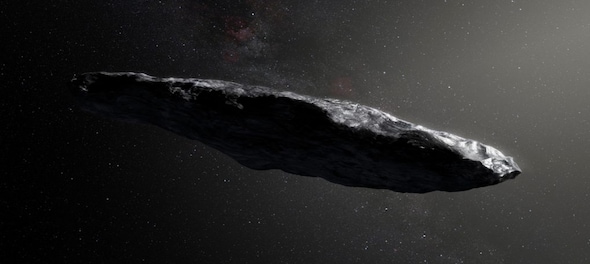
A giant asteroid is likely to pass by Earth today at a distance of 2.57 million kilometres. Space agencies including NASA are on alert as the gigantic 680-foot asteroid is expected to make its closest approach at a speed of 41,689 kilometres per hour. The US space agency has named the asteroid 2014 HK129, whose approach is considered safe for planet Earth with no chances of impact.
The distance might seem a lot, but it is relatively small in terms of astronomical distances, considering that the asteroid is as big as a stadium. Also, the blistering speed of 41,689 kmph, which is nearly thrice the speed of a hypersonic ballistic missile, makes the asteroid dangerous.
The asteroid 2014 HK129 belongs to the Apollo group of asteroids, as per a report by sky.org. It was first discovered on April 27, 2014. It was noted that it takes 810 days to complete a trip around the Sun. During its journey, it reaches a maximum distance from the Sun of 379 million kilometres.
ALSO READ:
Students from Jammu and Kashmir participated in NASA’s citizen science project
For the first time, nine students from a private school in Jammu and Kashmir's Kathua district participated in a global asteroid search campaign as part of NASA's citizen science project.
The global asteroid search campaign was organised by Delhi-based Homi Lab in association with the International Astronomical search collaboration (IASC) from October 21 to November 15.
A total of 105 participants from nine countries were selected from across the globe for the Kalam Asteroid Search Campaign, which is part of NASA's citizen science project.
They were later trained to analyse data and spot potential asteroids close to the earth. They were provided highly specialised training to handle the operations of the advanced astronomical software, Astrometrica.
Astrometrica is used to analyse images from the ‘Pan Starrs’ (The Panoramic Survey Telescope and Rapid Response System) telescope, located in Hawaii, USA. The system uses a 1.8 m (60 inch) telescope to survey the sky to look for asteroids, comets, and Near-Earth Objects (NEO), PTI reported.
(Edited by : Sudarsanan Mani)
Check out our in-depth Market Coverage, Business News & get real-time Stock Market Updates on CNBC-TV18. Also, Watch our channels CNBC-TV18, CNBC Awaaz and CNBC Bajar Live on-the-go!


Supreme Court dismisses plea seeking postponement of CA exams; details here
Apr 29, 2024 2:29 PM
Just 8% women candidates contested first two phases of Lok Sabha polls
Apr 29, 2024 12:00 PM
The sexual assault case against Prajwal Revanna — here's what we know so far
Apr 29, 2024 11:36 AM
Repolling underway at one polling booth in Chamarajanagar LS segment in Karnataka
Apr 29, 2024 10:32 AM

